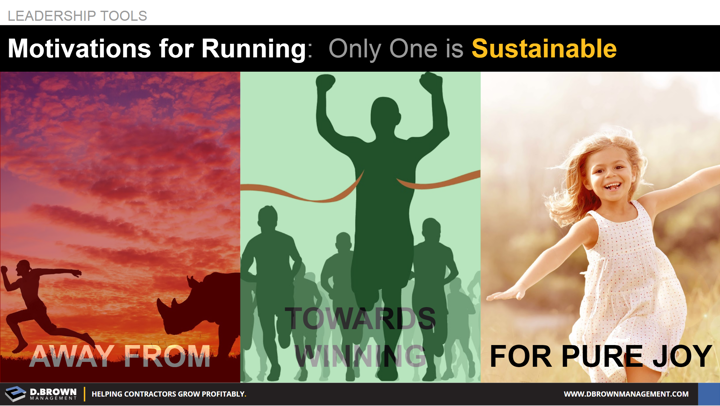In the short-term, you can manage simply by focusing on outputs. You want those outputs to be clearly defined as Objectives and Key Results (OKRs) that are in alignment from the company level through individual job role descriptions and are integrated into the evaluation feedback systems.
Diving deeply into motivations, you can look at three primary reasons why someone would run. The observation from the outside will just show three people running, but digging deeper you could find:
- Running from fear. Running away from something. Doesn’t want to be reprimanded or judged. Fear of job loss or similar.
- Running toward a goal, whether it is winning a race, dieting, etc.
- Running for the pure joy and love of running.
To some degree, all of us probably have a mixture of the above when it comes to the things we do in life and work. While you will never achieve it, your vision should be getting yourself and those you influence doing what they do mostly because they love the act of doing it.
That is one of the key elements of a sustainable and joyful life, career, and construction company.
Why do you run?
Why do those around you run?

